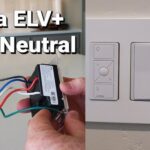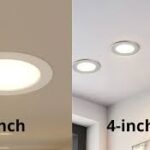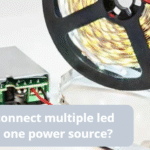Contents
4 inch vs 6 inch recessed lighting: comparison table
Basic Differences & Specs
| Feature | 4-inch recessed lights | 6-inch recessed lights |
|---|---|---|
| Physical size / aperture | Smaller, more compact | Larger, more visible |
| Typical lumen output | ~ 500 to ~ 900 lumens (depending on model) | ~ 800 to ~ 1400 lumens |
| Beam spread & coverage | Narrower spread (more focused) | Wider spread (fills more area) |
| Aesthetics / visual impact | More subtle, less “seeing the hole” in the ceiling | More pronounced; in large rooms they may look more proportional |
| Cost (fixture & installation) | Can be more expensive per fixture, possibly more fixtures needed | Generally lower cost per lumen and may need fewer fixtures overall |
| Energy usage | In many cases, smaller fixtures use less power (especially with LED) | Higher lumen output often means more energy consumption, though efficient designs mitigate this |
| Best for | Accent lighting, task lighting, smaller rooms, sloped ceilings | General lighting, larger rooms, open-plan areas |
So in simple terms: 6-inch lights tend to cover more area, giving more general ambient light. 4-inch lights are more discreet, better for focused or accent lighting, or in tighter spaces.

Pros & Cons of 4-inch
Pros
- Better on Sloped Ceilings: 4-inch fixtures are less obtrusive on angled surfaces and can be aimed more usefully.
- May Use Less Energy (for the same “look,” depending on model) because you can choose lower lumen outputs.
- Better for Accent / Task Lighting: The narrower beam and concentration is great when you want to highlight somethin
- g (artwork, counters, etc.).
- Subtle / Sleek Look: Because they’re smaller, they recede into the ceiling more, giving a cleaner visual effect.
Cons
- Light “Gaps” Risk: If spacing is off, you might see darker areas or inconsistent brightness.
- Higher Per-Unit Cost: The housing, trim, and parts for 4-inch models can cost more relative to their light output.
- Need More Fixtures: Because each light covers less area, to illuminate a room uniformly you may need more fixtures.
Pros and Cons of 6-inch
Pros
- Visually Proportional in Large Rooms: In big rooms or high ceilings, a 6-inch fixture looks more balanced than many tiny 4-inch holes.
- Fewer Fixtures Needed: Because each fixture covers more area, you may need fewer lights overall — lower labor and wiring costs.
- Better “General Lighting” Coverage: Their wider beam helps in reducing dark spots and distributing light over larger areas.
Cons
- Possibly More Energy Use (if over-spec’d): If you go high lumen, you risk excess energy usage.
- Potential for Glare / Over-illumination: If not selected well (beam angle, trim, etc.), they can be harsh.
- More Visible / Big Holes: In smaller rooms, 6-inch holes may dominate the ceiling visually.
Additionally, recessed lighting in general has pros & cons:
- Pros: flush ceiling profile, ability to direct light, minimal visual intrusion
- Cons: risk of glare, creating “cave effect” (walls too dark), heat or insulation issues, tricky installation in retrofits
Use-Case / Room Type Recommendations
Here are some guidelines / heuristics to help decide which to use in different rooms or for different lighting layers:
| Room / Purpose | Suggested Size | Notes & Tips |
|---|---|---|
| Small rooms (bathroom, small bedroom, hallway) | 4-inch or a mix | 4-inch works well to avoid visual bulk; you may need more to get even lighting. |
| Medium rooms / living rooms | 6-inch for general, 4-inch for accents | Use 6-inch for base ambient light, then supplement with 4-inch for artwork, counters, etc. |
| Kitchens, workspaces | 4-inch over counters / 6-inch general | 4-inch gimbals or adjustable trims are good for directing onto work surfaces. |
| High ceilings, open areas | 6-inch | 6-inch helps “push light” down from height so you don’t lose brightness. |
| Sloped / vaulted ceilings | Prefer 4-inch (or adjustable) | 4-inch is less visually disruptive and easier to aim. |
A rule of thumb often quoted: space 4-inch fixtures ~4 feet apart, 6-inch ~6 feet apart (in rooms of standard height)
Also, mixing sizes in a room is totally acceptable — many lighting designers use 6-inch for ambient/general, and 4-inch for accent / focal elements.

Tips for Choosing / Spec’ing (Beyond Size)
- Lumens, not just diameter
Don’t assume all 6-inch lights are brighter than all 4-inch. Many modern 4-inch LED fixtures can match or even exceed older 6-inch models’ output. - Adjust beam angle & trim
The trim (baffle, reflector, gimbal, etc.) and beam spread make a big difference in how the light “feels.” A well-chosen beam angle can compensate for size limitations. - IC / insulation contact rating
If you’re installing in ceilings with insulation, use IC-rated housings so they can touch insulation safely. - Dimming & control
Ensure the fixture supports dimming (especially with LED). Warm-dim or smooth dim curves improve comfort. - Depth / ceiling cavity
These fixtures need clearance above the ceiling. Ensure your ceiling cavity has room for the housing. - Retrofit vs new construction
- If you already have 6-inch cans, there are conversion kits that let you reduce the aperture to 4-inch (using rings/adaptors) without fully reworking the ceiling.
- In new builds, you can plan for canless or low-profile LED housings.
- Spacing & layout
Don’t “line them up in rows” blindly. Layout should consider function (task areas, seating, traffic flow) to avoid runway-light looks.
What factors should I prioritize beyond diameter?
| Factor | Why It Matters |
|---|---|
| Lumen output / efficacy (lm/W) | Determines actual brightness regardless of housing size |
| Beam angle / optics / trim type (baffle, reflector, wall wash, gimbal) | Impacts how light is distributed and how “soft” vs “sharp” the light looks |
| Color temperature & CRI | Ensures light tone and color quality match your design goals |
| Dimming / driver compatibility | To allow flexible control, avoid flicker, get smooth dimming |
| Housing depth, heat management, and IC / insulation rating | For safe installation and compatibility with the space above the ceiling |
| Spacing & layout | To avoid dark spots, glare, or “hot spots” |
| Cost & installation labor | More fixtures or more complex wiring increase cost/time |
Conclusion — Which Should You Pick?
- If your space is large or needs broad, even lighting (living rooms, open areas, high ceilings) → 6-inch is often safer and more efficient.
- If aesthetics, minimal visual intrusion, accent/task lighting, or tight areas matter → 4-inch gives more flexibility and modern sleekness.
- A hybrid approach often yields the best result: use 6-inch for ambient light and 4-inch fixtures for accents, counters, or architectural features.
- Always size and space based on lumen targets and beam patterns, not just diameter.
READ ALSO: Do led lights attract silverfish?
FAQs
Will I need more 4-inch lights than 6-inch lights in a room?
Usually, yes — because each 4-inch light covers a smaller area, you might need more fixtures to get uniform lighting.
But “more” doesn’t necessarily mean “a lot more,” especially if you choose high-quality 4-inch LEDs with strong output.
Mixing sizes is a common strategy: use 6-inch for base ambient light, and 4-inch for accent, wall-washing, or task zones.
Can I retrofit a 6-inch can to 4-inch or vice versa?
Yes — many manufacturers offer conversion or “down-conversion” kits that let you adapt an existing larger can to install a smaller trim.
But this depends on the depth and structure of the existing housing; sometimes you lose optimal light control or performance.
In many new installations, designers choose “wafer” or low-profile LED housings (not classic deep cans), making diameter changes more flexible.
Are there drawbacks to 4-inch or 6-inch in certain ceiling / insulation conditions?
All recessed fixtures should consider IC (insulation contact) rating if insulation above the ceiling is present. Some housings must stay clear of insulation. (This applies to both 4″ and 6″)
Depth clearance matters: some ceiling cavities or joist spaces might limit how big a housing you can use comfortably.
In sloped, vaulted, or angled ceilings, smaller apertures or adjustable trims (gimbals) are easier to aim and less visually intrusive.











